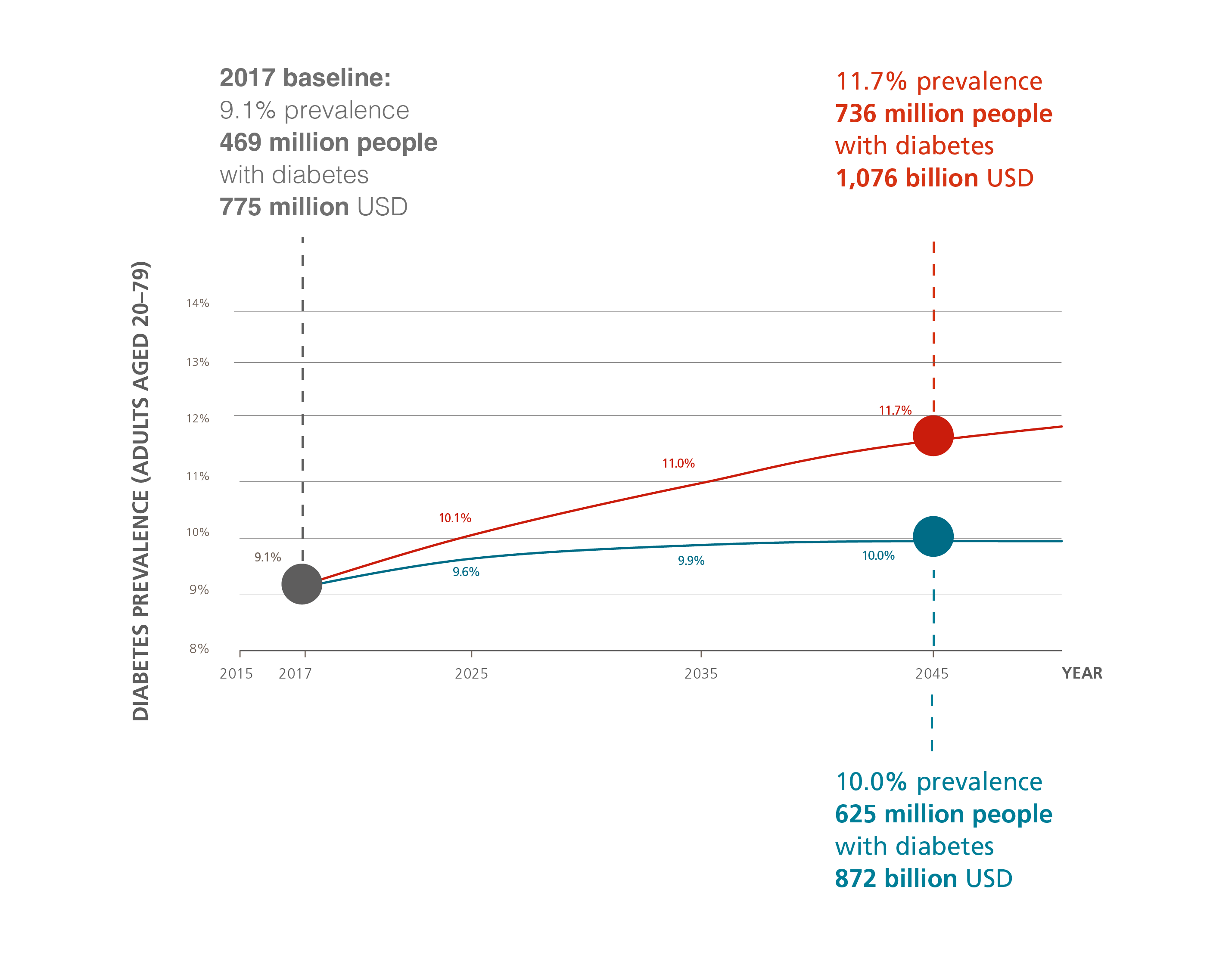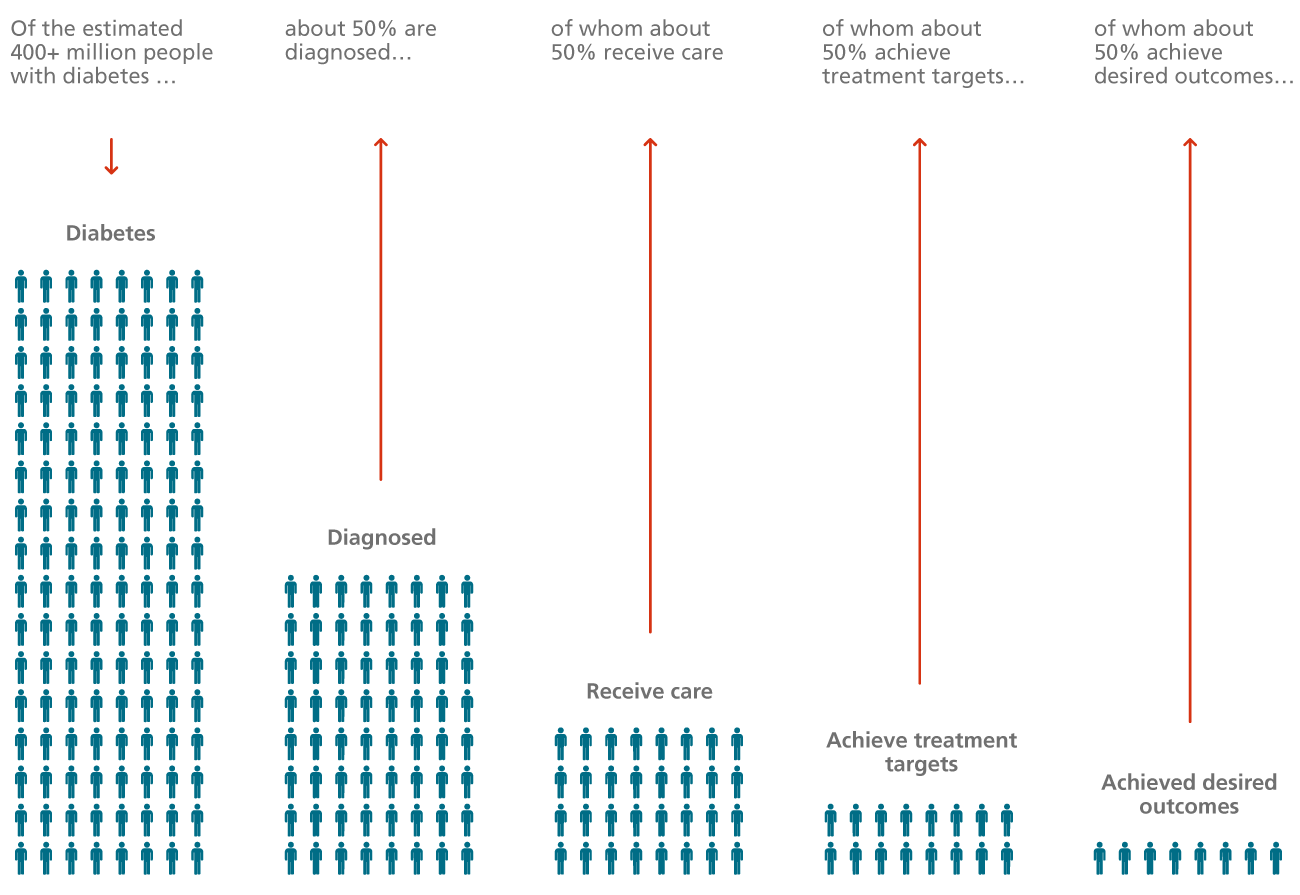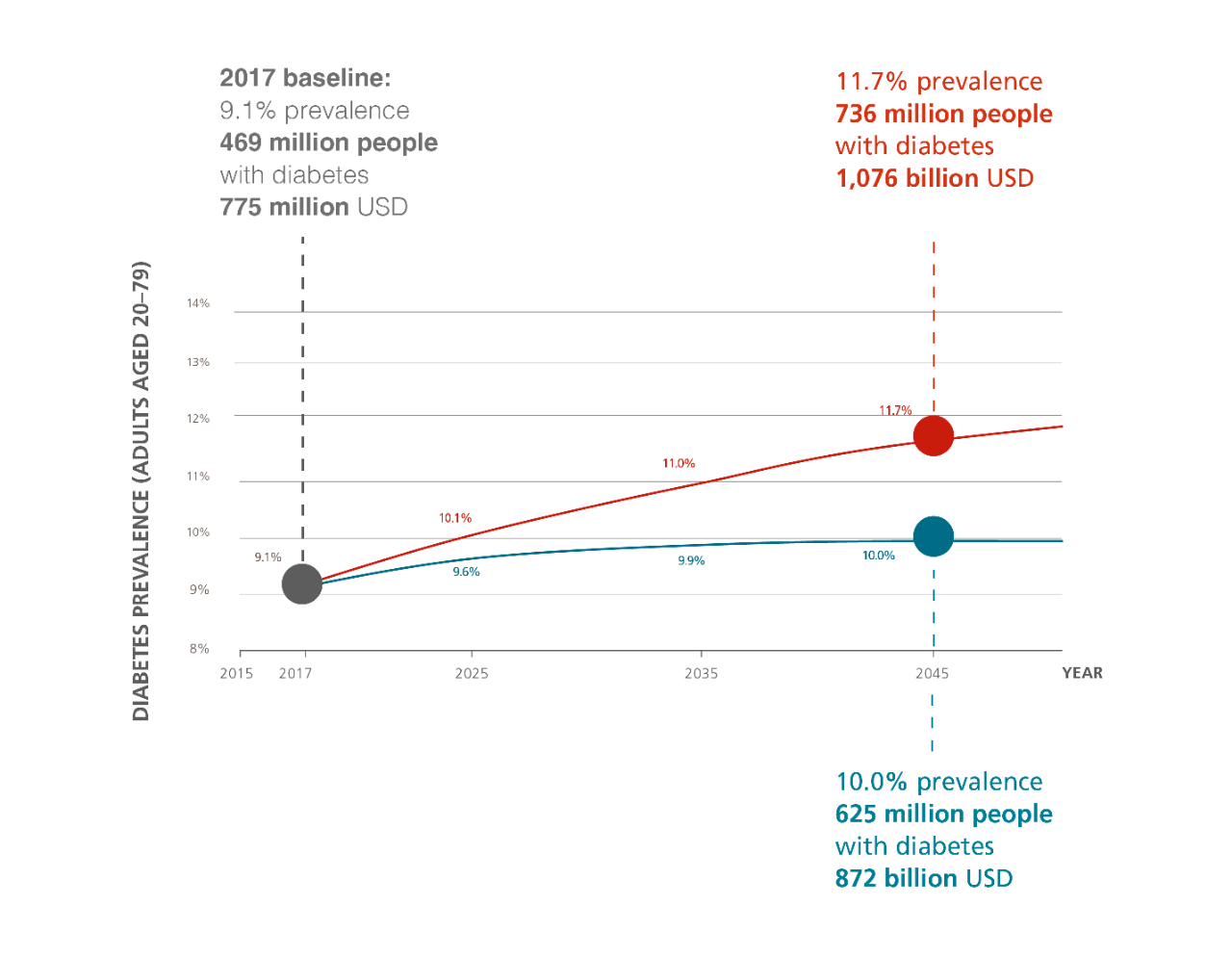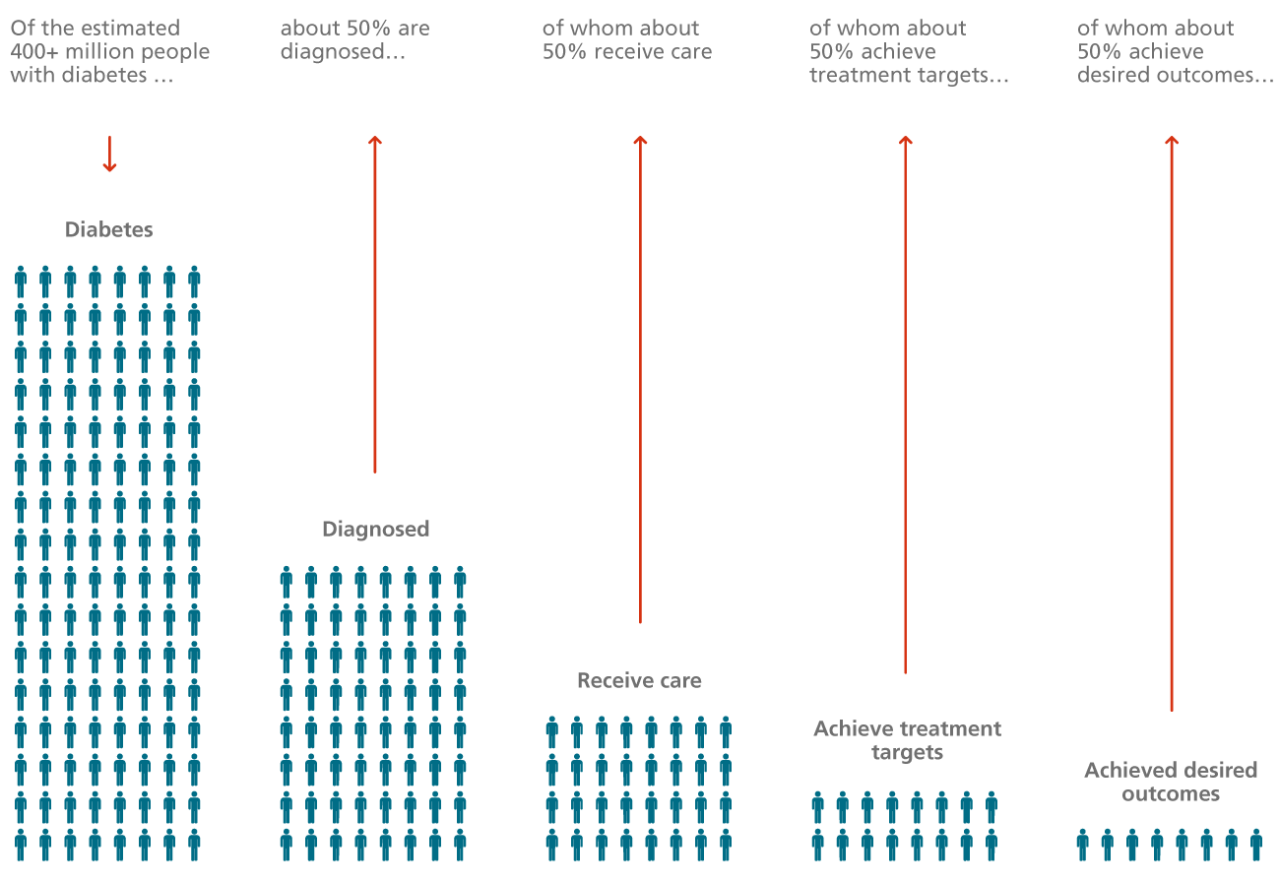The Urban Diabetes Toolbox enables city and health leaders around the world to create an action plan for tackling diabetes in their city. Based on the experiences of Cities Changing Diabetes partners, the toolbox provides inspiration along with new ways to set the goal, map the challenge, understand the areas of greatest risk and vulnerability, and design interventions to fight diabetes.
The toolbox consists of: the diabetes projection model, the rule of halves, the diabetes vulnerability assessment, and the urban diabetes priority assessment.

The Rule of Halves analysis is a framework that shows the gaps that need to be closed to ensure everyone with diabetes is diagnosed, gets treatment, and achieves better health outcomes. In diabetes, this is critical in order to avoid complications, improve quality of life and reduce treatment costs for the health system.

The Rule of Halves analysis is a framework that shows the gaps that need to be closed to ensure everyone with diabetes is diagnosed, gets treatment, and achieves better health outcomes. In diabetes, this is critical in order to avoid complications, improve quality of life and reduce treatment costs for the health system.
The Diabetes Vulnerability Assessment is a research tool for identifying city-level factors that make certain groups of people vulnerable or, conversely, resilient to diabetes and its complications. It is an innovative approach for establishing a local evidence base with a special focus on the sociocultural factors that impact the health and well-being of residents.
.png.sitesimgw.768.768.jpeg)
The Diabetes Vulnerability Assessment is a research tool for identifying city-level factors that make certain groups of people vulnerable or, conversely, resilient to diabetes and its complications. It is an innovative approach for establishing a local evidence base with a special focus on the sociocultural factors that impact the health and well-being of residents.
The Urban Diabetes Priority Assessment builds on the findings of the Diabetes Vulnerability Assessments conducted in 2015. It generates valuable information about population subgroups and their specific needs, priorities, and barriers to care and health. It allows for the design of tailored city-level interventions and policies that are more effective in preventing and managing diabetes than those targeted at general populations. The approach helps city leaders engage vulnerable citizens and shape interventions that will be the most.

The Urban Diabetes Priority Assessment builds on the findings of the Diabetes Vulnerability Assessments conducted in 2015. It generates valuable information about population subgroups and their specific needs, priorities, and barriers to care and health. It allows for the design of tailored city-level interventions and policies that are more effective in preventing and managing diabetes than those targeted at general populations. The approach helps city leaders engage vulnerable citizens and shape interventions that will be the most.


.png.sitesimgw.1280.1280.jpeg)

